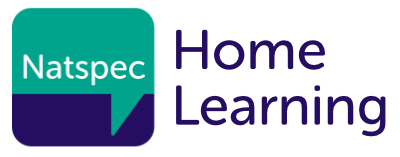Sense College have developed a reflective log template and guidance on how to use it.
Download:
This Reflective Log is intended to be used in conjunction with Sense College’s Sensory Story Activity.
What is a reflective log?
A reflective log is much like a diary, used to capture a collection of developing thoughts over a period of time. We use reflective logs to gather information to demonstrate progress and understanding of support needs to adapt and develop a learning activity or plan.
Who completes the reflective log?
The reflective log is much like a diary that contains regular entries from a learner’s supporting staff member, parent or carer. These individuals tend to know the learner best, they can not only describe the events that occurred, but can interpret learner behaviour and emotions to give a greater layer of meaningful detail.
How to complete the reflective logs?
Complete the reflective log after carrying out the activity. Recording the activity and replaying can be a great way of reflecting on the experience through the lens of a camera- you may be surprised to find subtle responses or communication attempts that were overlooked while you were engrossed in delivery. However, video reflection is not essential to complete a useful account in a reflective log since this can be time consuming.
When logging an account think about the learner’s sensory experience and their responses. For example, briefly describe the activity then focus more on the significant occurrences with regard to the learner’s targets or learning aims. Consider your own approach, the environment, the sensory quality of the resources, the learner’s response- how have they differed- and your interpretation and reasoning behind that.
How is the information used?
Reflective logs should be returned to the teacher/education coordinator on a regular basis. They will demonstrate learner performance and can support identification of progress and achievement. They help the teacher recognise areas that may need to be modified to foster participation or offer appropriate challenge.
Most importantly, the information in the reflective log can help us all learn about what works best. The reflective log should open up a dialog of support between the family and the college. It should establish emerging, developing and secure concepts. Initially, the focus may be on creating structure and familiarity so the teacher may suggest isolating the activity to a specific section linked to the individuals emerging skills and targets. It is very likely that familiarity and recognition will occur in stages over time rather than on one occasion as a whole. So capturing consistent, appropriate responses as well as inconsistent and potential misconceptions are crucial. This helps determine what we should or should not do in subsequent experiences in order to reduce confusion and frustration or build on an idea or concept that is secure.
Tips for Reflective Log Entries
Be Critical – While you will need to state the actions and events undertaken keep this brief and focus more on the analysis of those descriptions.
Be Specific – If you capture that the learner felt anxious or frustrated during a particular task explain how you know that, what might be causing anxiety and be clear about the particular aspects that are not working. Similarly, if the task doesn’t appear to be challenging, explain why. Is there something you could do differently? Add this to the log to discuss with the teacher/education coordinator. They may be able to add to the action column of the log.
Be Thorough – Follow up on previous thoughts and actions. Comment on the impact of change.
Use Evidence – Take some picture, videos or use an assessment checklist, where recommended by the teacher, this will help track progress.
Example of a Reflective Log Entry:
Reflective Account: This week while recapping the scavenger hunt story we were working on picking out items by their sensory property using a gesture clue. We co-actively found the rough item (grater) and the sound items (pasta jar) from the hunt in our scavenger box. We followed the same process for the smell item (candle). We tapped my nose and waved our fingers under my nose together to HUH sign ‘smell’ in order to communicate we were looking for something that smells. I should point out this was the last item left in the box to find. Jo seemed to recognise what he needed to do- either grasping the sequence from the prior actions or potentially linking the gesture ‘smell’ with the candle he earlier retrieved because he reached out into the box without a prompt or hesitation and independently pulled out the candle with his right hand. He brought it to his nose to smell for confirmation then placed the candle on the table. There was a big grin from Jo as I praised his achievement with clap.
Action: Next time, I could change the order of the story/hunt to determine if Jo has grasped the sequence or recognises the ‘smell’ gesture.

